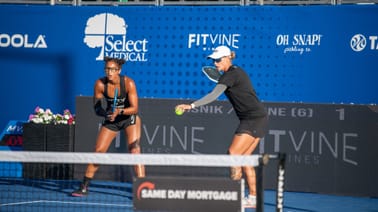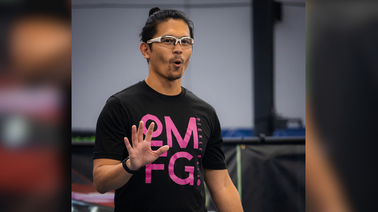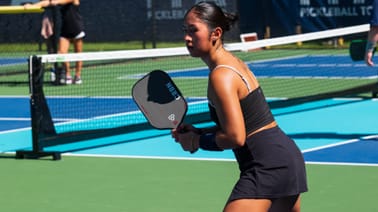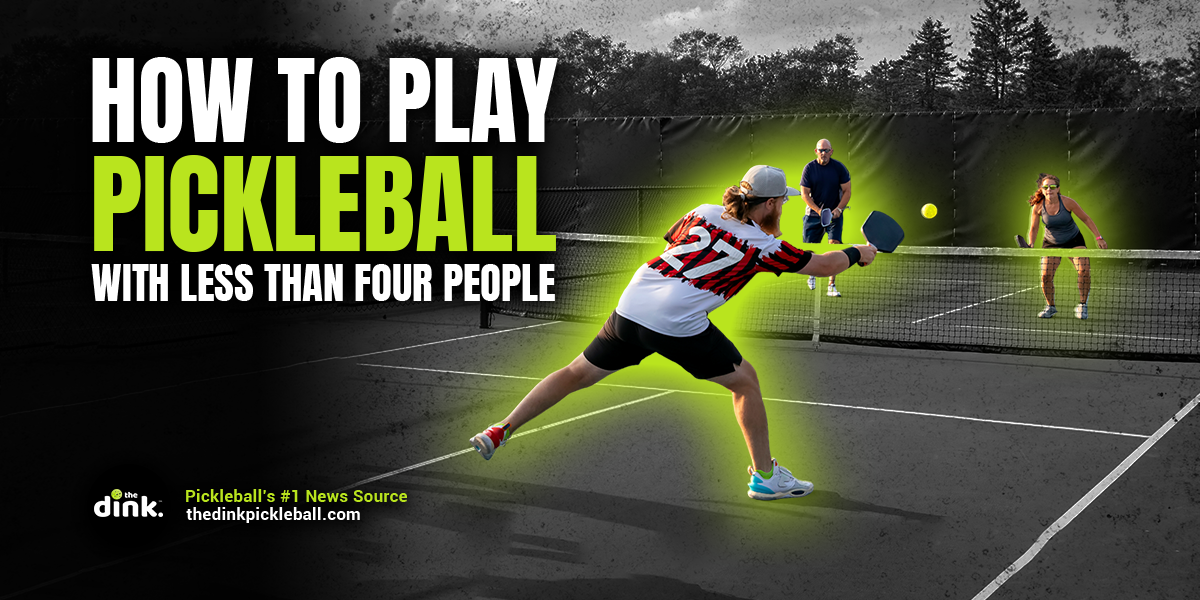
We've all been in a situation where our perfect plan for doubles pickleball was blown up because someone (for whatever reason) had to cancel at the last moment.
It's a bummer because what the heck are you supposed to do on a pickleball court with just three people?
Well, as it turns out, there's quite a bit you can do to turn that bummer into a full-out day of fun on the courts.
Game No. 1 - Cutthroat Pickleball
Aptly named, cutthroat pickleball is a two-on-one 'doubles-style' match. Remember, we said you could play with three people, we didn't say it was easy.
The Setup
In cutthroat pickleball, you put all three players on the court, but two are on one side and one is on the other.
The side with one player is the "serving side" and the side with two is the returning side. This is important because you'll rotate throughout the match, yet this part remains the same.
While this sounds like quite the disadvantage to the one player-side, there's an important rule that evens the playing field (or, in this case, the court):
The two-player side can only hit the ball into the half of the court that the single player serves from, while the solo player can hit it to the entire court.
This diagram should help you visualize this:
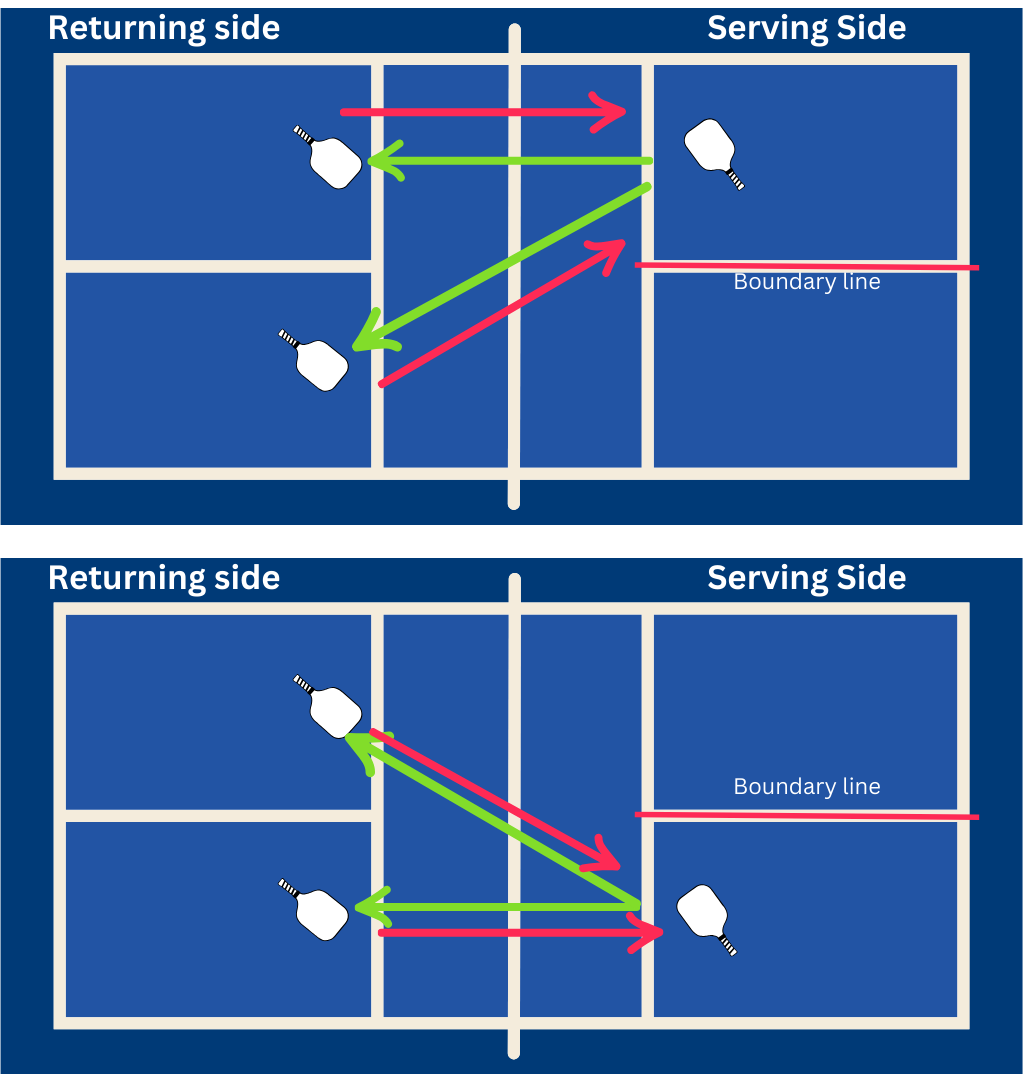
Think of the solo player's centerline as the sideline for his side of the court. If the ball hits the line it's still in play. But, if it hits outside the line, then you should treat it like an out-ball.
How to Play
Except for that particular rule explained above, play happens just like it would in a regular doubles match.
When the score of the player serving is even (0, 2, 4, 6, 8, 10), they serve from the right side. When it's odd (1, 3, 5, 7, 9), they serve from the left.
The single player continues serving until they side out. When that happens, all the players rotate clockwise, and one of the players on the two-player side moves onto the one-player side for their serve.
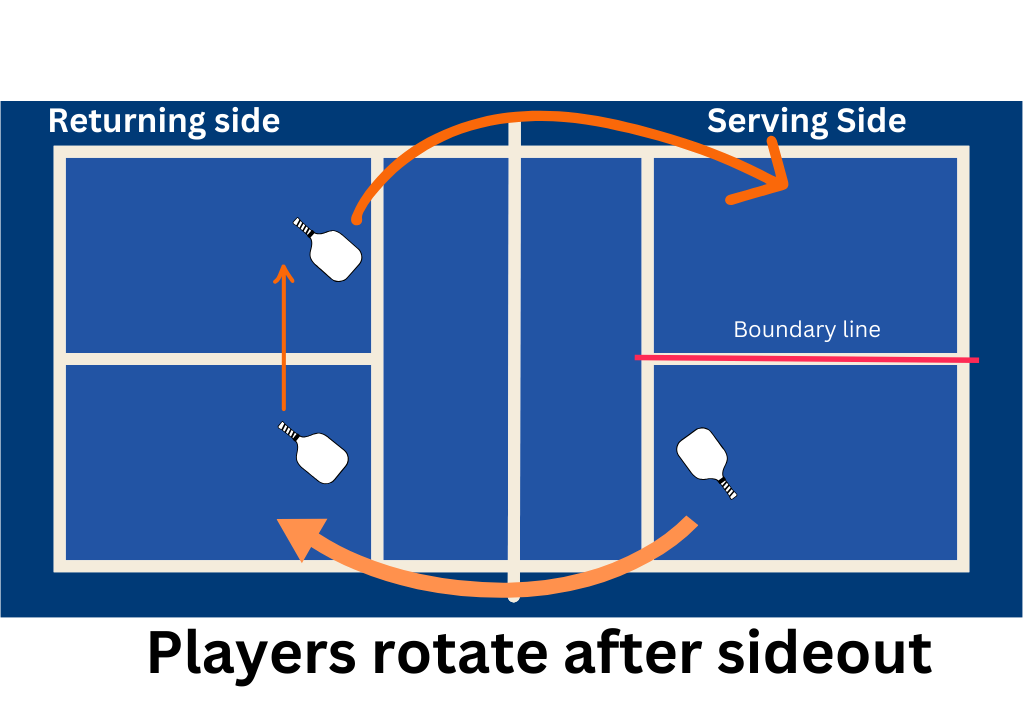
Games are played to 11 and everyone keeps track of their scores.
Tips for Cutthroat Pickleball
The best part about Cutthroat is that it simulates doubles pickleball so well. You can still practice your drops and your kitchen play, and eliminating one of the serving side halves gives every player a chance to win.
One tip for better gameplay is to not call "lines" super aggressively. Basically, if it's close, lean on the side of the ball being in, rather than calling it out. This can help keep the game running smoothly and help each player play longer rallies.
Game No. 2 - Skinny Singles
Skinny singles is one of the most popular games to play with just two people (or three if you want to sub someone out after each game).
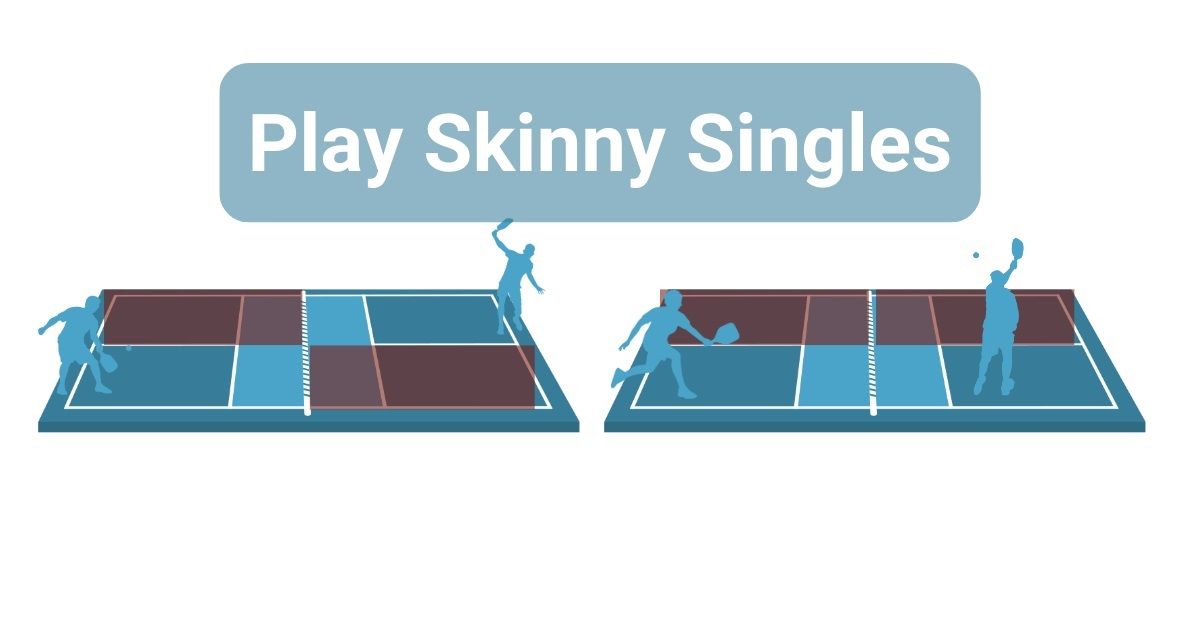
The Setup
In Skinny Singles, you have one player on each side of the court. The players start crosscourt from one another, similar to how you'd start regular pickleball singles.
However, the reason it's called Skinny Singles is because every ball that's hit must stay within the half of the court the player starts the point on.
If the server scores a point, the server moves, but the returner stays. Now, instead of crosscourt from one another, the players are lined up straight ahead.
Here's a diagram to show this visually:
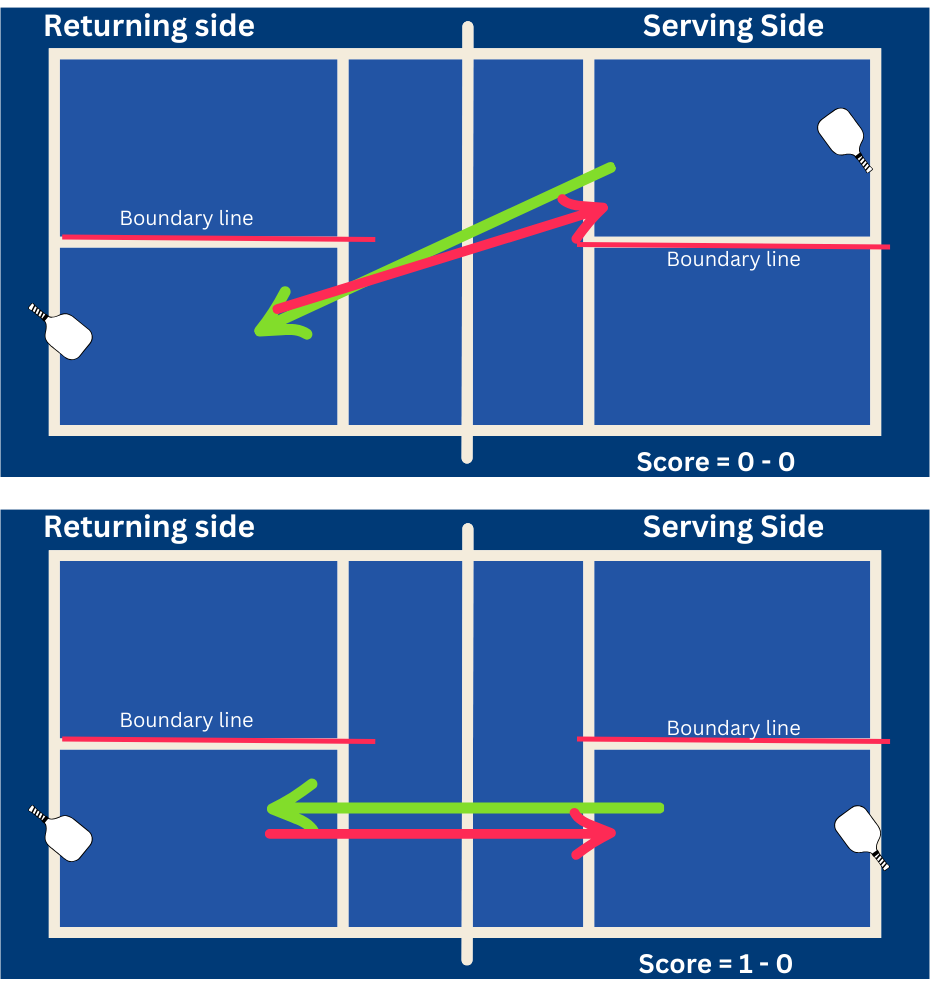
How to Play
Once the server has a side out, the ball goes to the other player, who stays in the square they are in, and only moves if they score. The returner still maintains the same position until the ball comes back to them (after a side out), and they score another point.
Play games to 11, just as you regularly would.
Tips for Skinny Singles
Again, the beauty of playing skinny singles is that two people can play as though it's doubles pickleball and only worry about covering half the court.
Similar to Cutthroat, try not to call "lines" too stringent and enjoy longer rallies and more chances to take fun shots.
Game No. 3 - The Firing Squad
If you've read our articles, you know we are huge fans of drilling in pickleball. No, we're not talking about drilling your opponent with the ball – unless of course, they deserve it...
We're talking about practicing specific skills. Three people are perfect for really intense drilling sessions that get you a lot of touches you wouldn't normally get during a game.
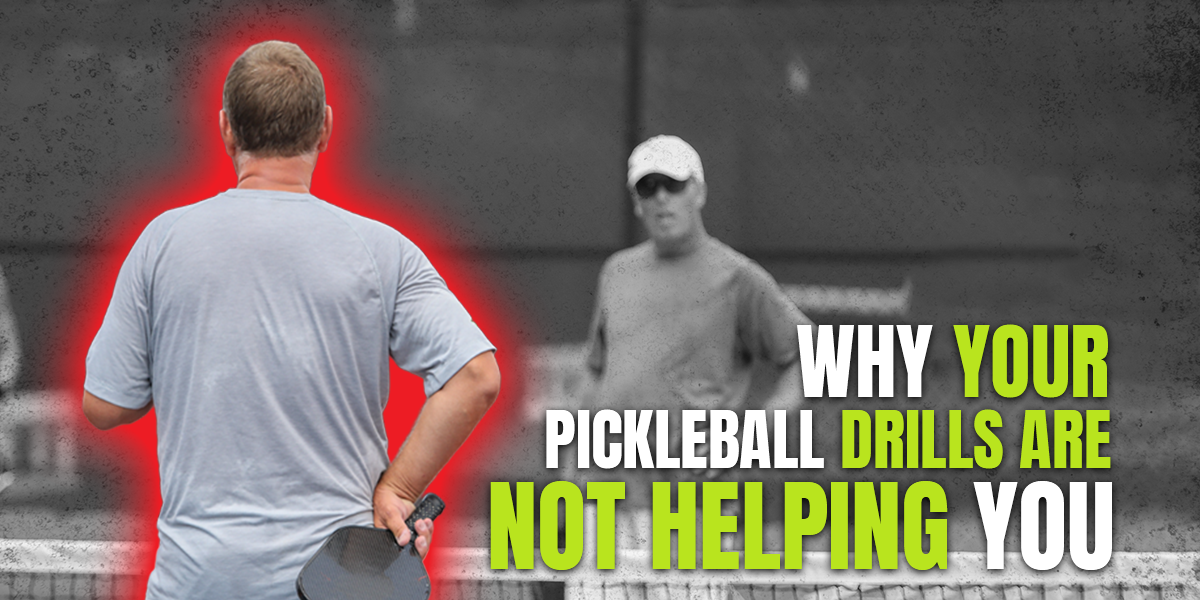
One of the best three-person drills is a transition game, which I like to call "The Firing Squad."
The Setup
Two players stand at the kitchen line, while one player stands at the baseline at the opposite end of the court.
Similar to Cutthroat, the two players must hit the ball within the half of the court the single player starts on, while the solo-side player can hit it anywhere.
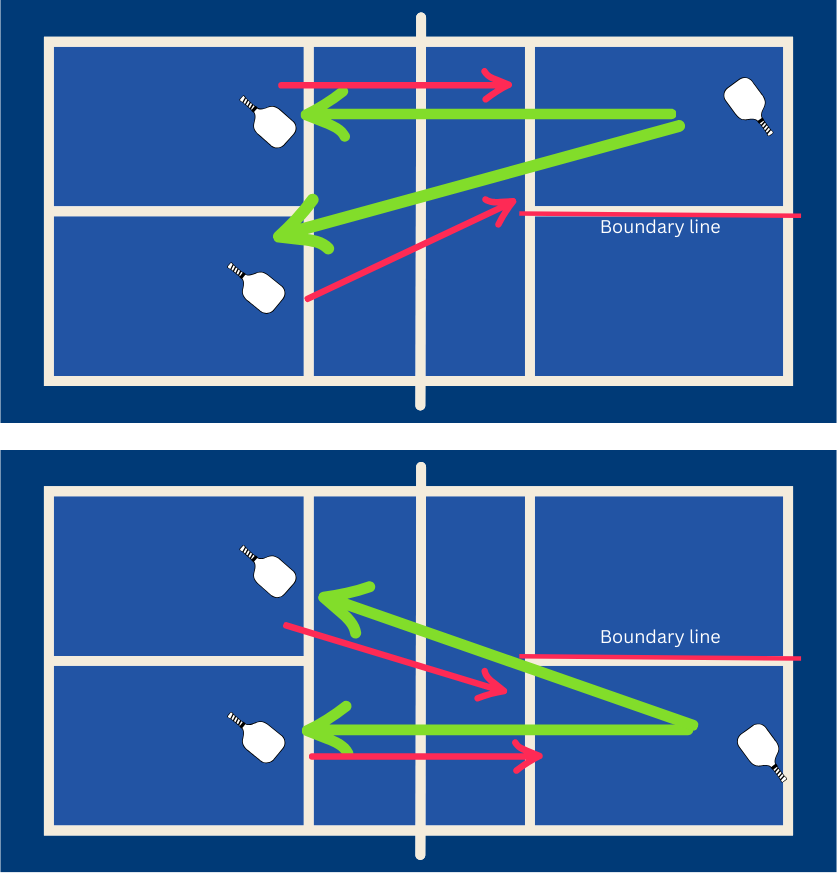
How to Play
The point of this game is not to serve or return, but instead for the solo player to make their way up to the kitchen line to try and win the point.
You start by having the single player stand on the baseline and lob a ball to one of the players at the kitchen line. That player should then hit an aggressive shot that forces the single player to attempt a reset into the kitchen.
Once this starts play, the point is live and the single player should focus on hitting good blocks, drops, and resets and moving themselves to the kitchen line.
If there is a side out or the ball bounces twice, it ends the point. This game uses rally scoring, which means a point will be awarded after every rally.
To even the game out (since it is a two-on-one "fire" fest), the solo player starts with a score of seven, while the two players start with a score of 0.
You play to 11.
Once either team reaches 11 points, everyone should rotate clockwise, and a new person should be on the one-person team.
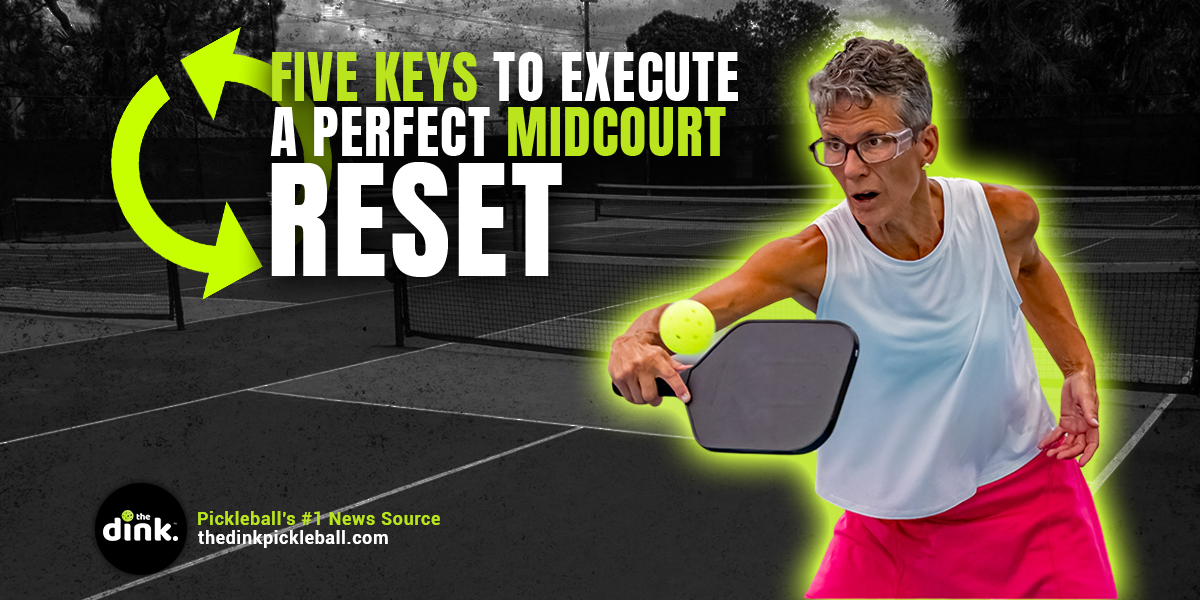
Tips for Firing Squad
Because the point of this game is to improve your skills, you should focus on good form and really try your best to either drop the ball into the kitchen softly (if you're on the solo side) or keep your opponent back as long as possible (if you're the two-person side).
After each point, the single player should switch to the other half of the court, so they can work on blocks, resets, and drops from both the left and right sides.
Another great drill you can do with just two people is the Cat and Mouse Drill:
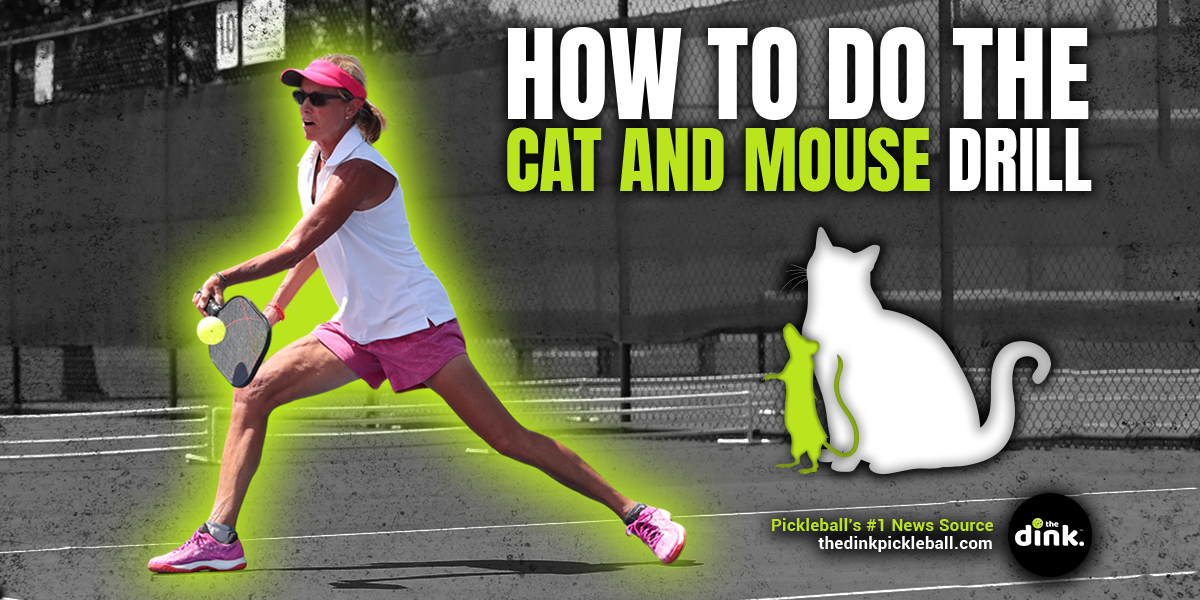
There you have it, three pickleball games (and one extra drill) you can play with less than four people.
Next time your father-in-law doesn't show up to your game, you'll know precisely what to do with your court time.








